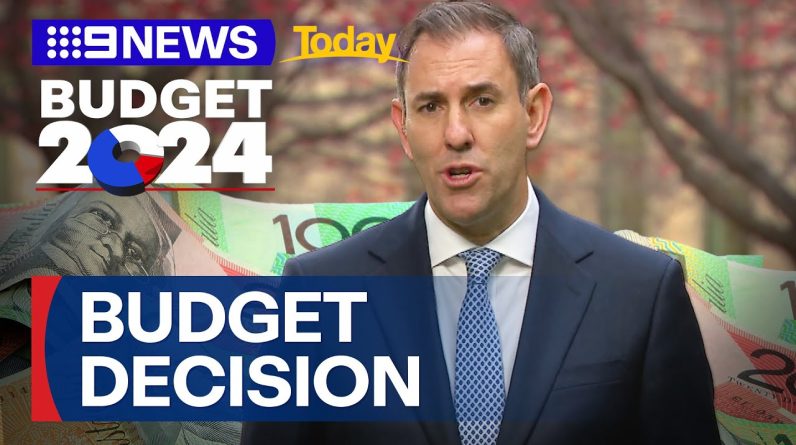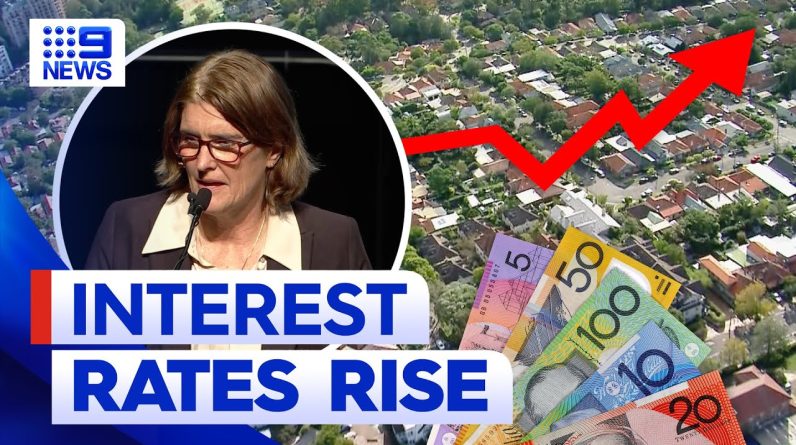New figures show that under the surface a recession is already being seen in Australia’s economy.
Australia’s Economic Growth Stumbles, Hits Household Wallets
Australia’s economic growth has encountered a stumbling block, resulting in a direct impact on households’ financial well-being. The country’s latest data reveals a mere 0.2% expansion in the economy during the September quarter. However, when considering population growth, the economy actually contracted by 0.5% per person.
On a per capita basis, Australia’s economic output declined by 0.5% in the quarter and 0.3% over the past year. This sluggish growth can be attributed, in part, to higher mortgage interest rates, which have contributed to stagnant consumer spending. Moreover, the removal of the Low and Middle Income Tax Offset and increased interest payments on home loans have led to a decline in the household savings ratio.
As a result, both Australian households and the economy have experienced a slowdown in spending, accompanied by a decline in real disposable income. This article will examine the causes and implications of this economic setback, as well as explore potential strategies for recovery.
Key Takeaways
- Australia’s economy grew by 0.2% in the September quarter, but on a per capita basis, economic output slumped by 0.5% in the same period and fell 0.3% over the past year.
- Higher mortgage interest rates led to flat consumer spending during the quarter, and savings rates fell to near 16-year lows.
- The removal of the Low and Middle Income Tax Offset and increased interest paid on home loans contributed to a fall in the household saving ratio.
- Despite a slowdown in spending and a decline in real disposable income, government expenditure and investment, particularly in transport and mining inventories, supported GDP growth.
Slow Economic Growth in Australia
Despite various efforts to stimulate the economy and support households, Australia is experiencing slow economic growth. In the September quarter, the country’s economy grew by a mere 0.2%, and on a per capita basis, the economic output slumped by 0.5%.
This slowdown is attributed to factors such as flat consumer spending, higher mortgage interest rates, and falling savings rates. Also, the removal of the Low and Middle Income Tax Offset has contributed to a fall in the household saving ratio.
The impact on households is evident, with consumer spending stalling, real disposable income contracting, and services experiencing a decline. However, there is some optimism as the government plans to provide tax breaks for higher-income households from July 1 next year, and there have been positive signs of rising wages and decreasing unemployment.
Household Impact of Economic Slowdown
The economic slowdown in Australia has had a significant impact on households. This has led to a decline in consumer spending and a contraction in real disposable income. As the economy grew only 0.2% in the September quarter, Australian households experienced a slowdown in spending. In per capita terms, consumer spending stalled. Real disposable income also collapsed, contracting 1.3% for the quarter and 4.3% for the year.
The decline in the household savings ratio can be attributed to several factors. These include higher mortgage interest rates, increased interest paid on home loans, and inflationary pressure. Additionally, the removal of the Low and Middle Income Tax Offset and surging mortgage repayments have contributed to the increase in income payable by households. These factors have collectively impacted the wallets of Australian households.
Factors Contributing to Flat Consumer Spending
As a result of various economic factors, including higher mortgage interest rates and inflationary pressure, consumer spending in Australia has remained stagnant. The increase in mortgage interest rates has resulted in higher borrowing costs for households, leading to reduced disposable income available for spending. This, coupled with the rise in inflationary pressure, has further eroded the purchasing power of consumers.
As a result, households have become more cautious in their spending habits, choosing to save instead of making discretionary purchases. Additionally, the removal of the Low and Middle Income Tax Offset has also contributed to the flat consumer spending, as it has reduced the disposable income of households.
These factors combined have created a challenging environment for consumer spending in Australia, impacting the overall economic growth of the country.
Decline in Household Savings Ratio
The decline in Australia’s household savings ratio has been attributed to various economic factors impacting disposable income and consumer spending habits. One significant factor is the removal of the Low and Middle Income Tax Offset, which has contributed to the fall in the household savings ratio.
Higher mortgage interest rates as well as inflationary pressures on households have also played a role in reducing savings. The income payable by households has increased due to surging mortgage repayments and rising income tax bills, further squeezing the ability to save. As a result, the savings rates have reached near 16-year lows, highlighting the challenges faced by Australian households in building their savings.
Increased Mortgage Repayments and Inflationary Pressure
Given the decline in Australia’s household savings ratio and the impact of various economic factors, it is crucial to examine the increased mortgage repayments and inflationary pressures that have further strained household budgets.
As economic growth stumbles, households are facing higher mortgage repayments, putting additional financial pressure on their wallets. The rise in mortgage interest rates has led to flat consumer spending, as households allocate more of their income towards servicing their home loans.
In addition, inflationary pressures have further exacerbated the situation, driving up the cost of living for households. As prices for goods and services increase, household budgets are stretched even further, leaving less room for discretionary spending and impacting overall economic growth.
It is important for policymakers to address these challenges and implement measures to alleviate the burden on households.
Surge in Income Payable by Households
The surge in income payable by Australian households has contributed to the strain on their financial resources. Over the past year, income payable by households has increased by 27.9%, primarily driven by surging mortgage repayments and increasing income tax bills.
As a result, households are finding it increasingly difficult to manage their expenses and save money. The removal of the Low and Middle Income Tax Offset, along with higher mortgage interest rates and inflationary pressure, has further impacted the household saving ratio, which has fallen to near 16-year lows of just 1.1%.
This surge in income payable by households, coupled with stagnant wage growth and rising living costs, adds to the financial challenges faced by Australian households and contributes to the overall strain on their wallets.
Slowdown in Consumer Spending and Disposable Income
The slowdown in consumer spending and disposable income has exacerbated the strain on Australian households’ financial resources. Consumer spending has stalled, leading to a decline in per capita terms. Real disposable income has collapsed, contracting by 1.3% for the quarter and 4.3% for the year.
This slowdown in spending has been reflected in the contraction of services by about 1% in the quarter, although there has been a surge in vehicle spend. The decline in consumer spending and disposable income has put pressure on households, particularly as savings rates have fallen to near 16-year lows of just 1.1%.
Additionally, the removal of the Low and Middle Income Tax Offset has contributed to the fall in the household saving ratio.
Productivity and Wages Growth in the Economy
Productivity and wages growth in the Australian economy has been a significant concern amidst the country’s economic growth stumble and its impact on household wallets. Output per person has been declining since the beginning of the year, indicating a slowdown in productivity.
On the other hand, economy-wide wages experienced a 2.6% increase over the quarter. However, this increase in wages has led to a rise in real unit labor costs, which could put further strain on households. Government expenditure, driven by social benefits to households, has helped to mitigate some of the challenges faced by households.
It is crucial for policymakers to address these issues and find ways to improve productivity while ensuring that wages growth is sustainable and does not burden households further.
Rate Rise Bets and Future Growth Prospects
Amidst Australia’s economic growth stumble, there are growing concerns and uncertainties surrounding rate rise bets and future growth prospects. The market sentiment has shifted from the risk of a rate hike to the likelihood of rate cuts. Treasurer Jim Chalmers has highlighted the federal government’s assistance for households, but there are still doubts about the effectiveness of these measures.
While inflation is moderating, wages are rising, and unemployment has decreased, there are lingering concerns about the overall strength of the economy. Additionally, the fall in mining exports has caused the sector to build up inventories, adding to the uncertainties.
Albion News is a great place to find informative, up-to-date news articles. We provide a wide range of unique articles that offer an interesting perspective on current events from around the world and from various different sources. You can easily search for the topics that matter most to you and explore in-depth pieces that provide insight into the issues and important debates occurring today. Albion News helps you stay informed with carefully researched and credible stories!







